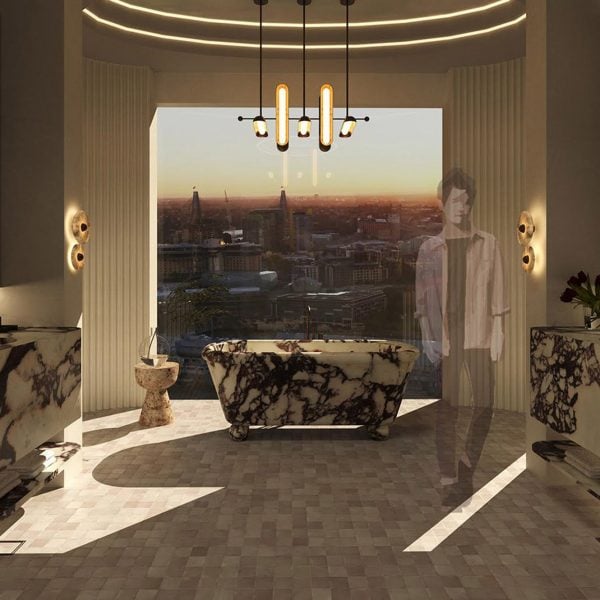Dezeen School Shows: a biodegradable packaging design for tampon products is featured in this Dezeen school show by Design Institute of Australia.
Also included is an app for people with ADHD and a table which takes inspiration from the form of mushrooms.
Awards programme: Graduates of the Year Awards 2024
Organisation: Design Institute of Australia
Organisation statement:
“Since 1939, the Design Institute of Australia (DIA) has been the national body championing the value and impact of design. Its mission is to empower designers through knowledge, thought leadership, access and inclusivity.
“As Australia’s leading advocate for design, the DIA boasts the most extensive professional network in the field, promoting design excellence and progressive change while serving as a trusted voice in national conversations.
The DIA engages with and educates designers, government and the wider community, fostering collaborations that allow designers to connect across industry and society.
“The Graduates of the Year Awards (GOTYA), Australia’s premier programme for emerging designers, was created to support and celebrate exceptional talent as they begin their professional journeys.
“Since 2005, GOTYA has mentored design students, offering invaluable real-world feedback from seasoned designers and industry experts to both graduates and tertiary institutions.
“In 2024, over 40 tertiary institutions across Australia were invited to nominate their top graduates in three new cross-disciplinary categories – place, use, and interact – which reflect the evolving ways we live and design today.
“Nominee portfolios were evaluated anonymously based on design excellence, with a transparent judging process and clear criteria. Finalists were interviewed by judges to assess their transferable workplace skills and their potential impact on the Australian design industry.
“Esteemed jurors this year include Gavin Campbell, Sonia Simpfendorfer, Byron George, David Constantine, Daniel Dalla Riva, James Picton, Steve Martinuzzo and Trish Johnston.
“GOTYA winners have the opportunity to gain mentorships, win prizes, meet potential employers, and most importantly, receive recognition and support from the design community.”
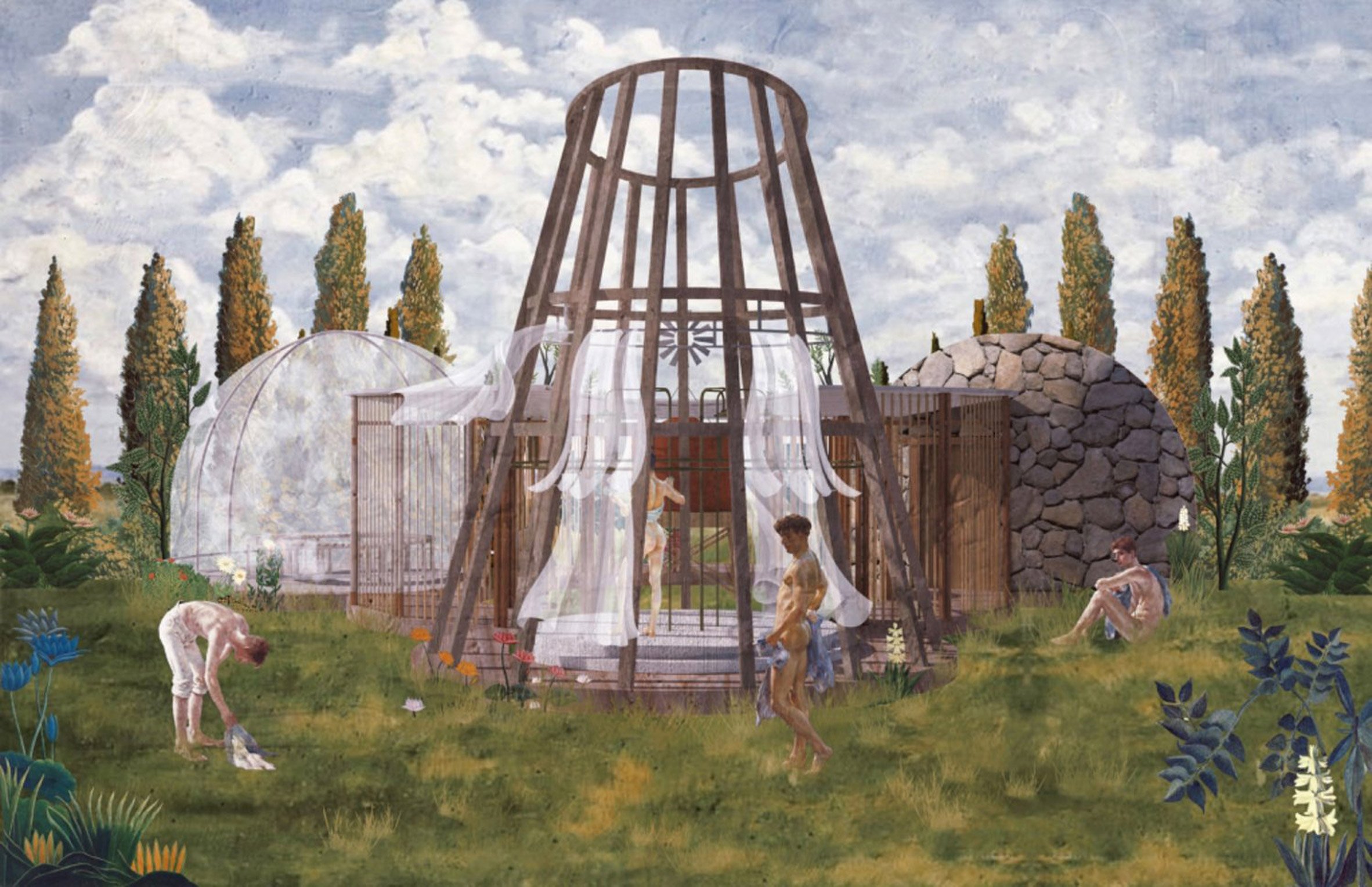
Commune.FD.Heaven by Xingchen Fan
“Xingchen Fan’s project explores the intersection of architecture, queer identity and environmental justice; grounded in the legacy of the 1973 Aquarius Festival in Nimbin, N.S.W, which symbolised liberation in Australia, the project shines a spotlight on LGBTQI communes.
“The design is a small-scale architectural concept aimed at supporting sexual minorities, using cost-effective and organic materials to maintain both authenticity and sustainability.
“Inspired by the stone sauna, Fan expands the concept by introducing multiple functional spaces that foster community and inclusivity.
“Historically, marginalised groups have faced societal exclusion, and Fan’s design responds to this by creating environments that offer comfort and dignity.
“By integrating empathy-driven research with user-centric design principles, the project offers inclusive, sustainable spaces that uplift and empower underrepresented groups.”
Student: Xingchen Fan
Institution: Monash University (VIC)
Course: Bachelor of Spatial Design
Awards: Australian Graduate of the Year, Place Category Winner — Higher Education
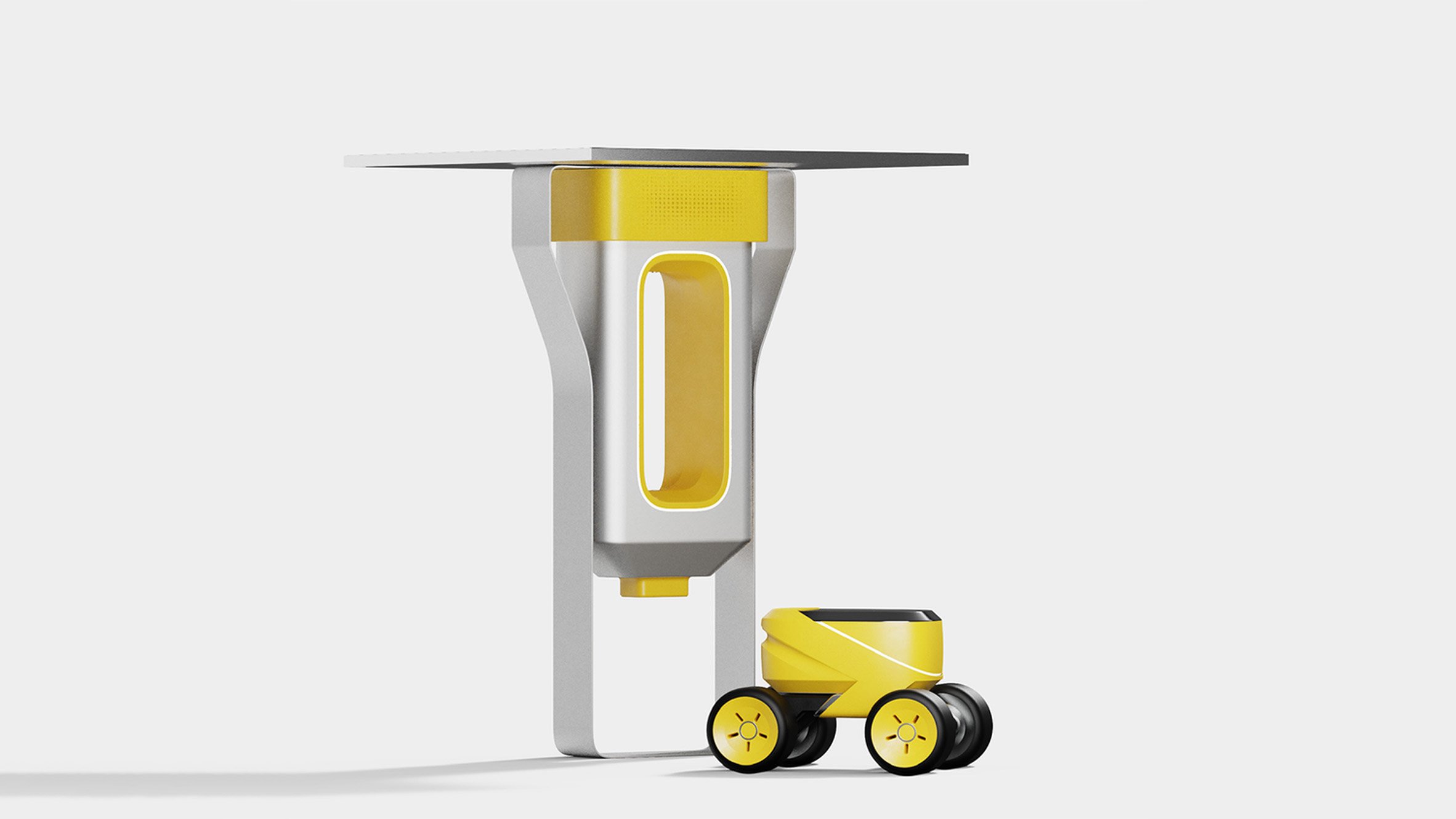
Auly Bush Fire Monitoring System by Maoxin Yuan
“Maoxin Yuan’s Auly Bush Fire Monitoring System integrates advanced technology to address bushfire management, focusing on the prevent, prepare and respond stages to minimise damage.
“Tasked with creating an innovative solution that merges automation with bushfire monitoring and response, Auly incorporates both stationary and mobile devices to push the boundaries of real-time fire prevention.
“Using a combination of UGV and station technology, Auly monitors fuel moisture content, wind, temperature and CO2 levels, providing immediate, area-specific data, with LEO satellite technology to ensure connectivity without relying on fragile cellular networks.
“Auly addresses the inefficiencies of traditional fire detection methods, reducing reaction times and lowering the costs associated with human resources – it allows authorities and farm owners to monitor fire-prone areas without the need for on-site personnel.
“Modular in design, Auly can be customised to suit farms of varying sizes, enabling a community-based alarm system when bushfires occur; the integration of satellite technology ensures communication even when cellular towers are compromised, offering a resilient and forward-thinking solution.”
Student: Maoxin Yuan
Institution: University of New South Wales (NSW)
Course: Bachelor of Industrial Design (Honours)
Awards: Australian Graduate of the Year, Use Category Winner — Higher Education
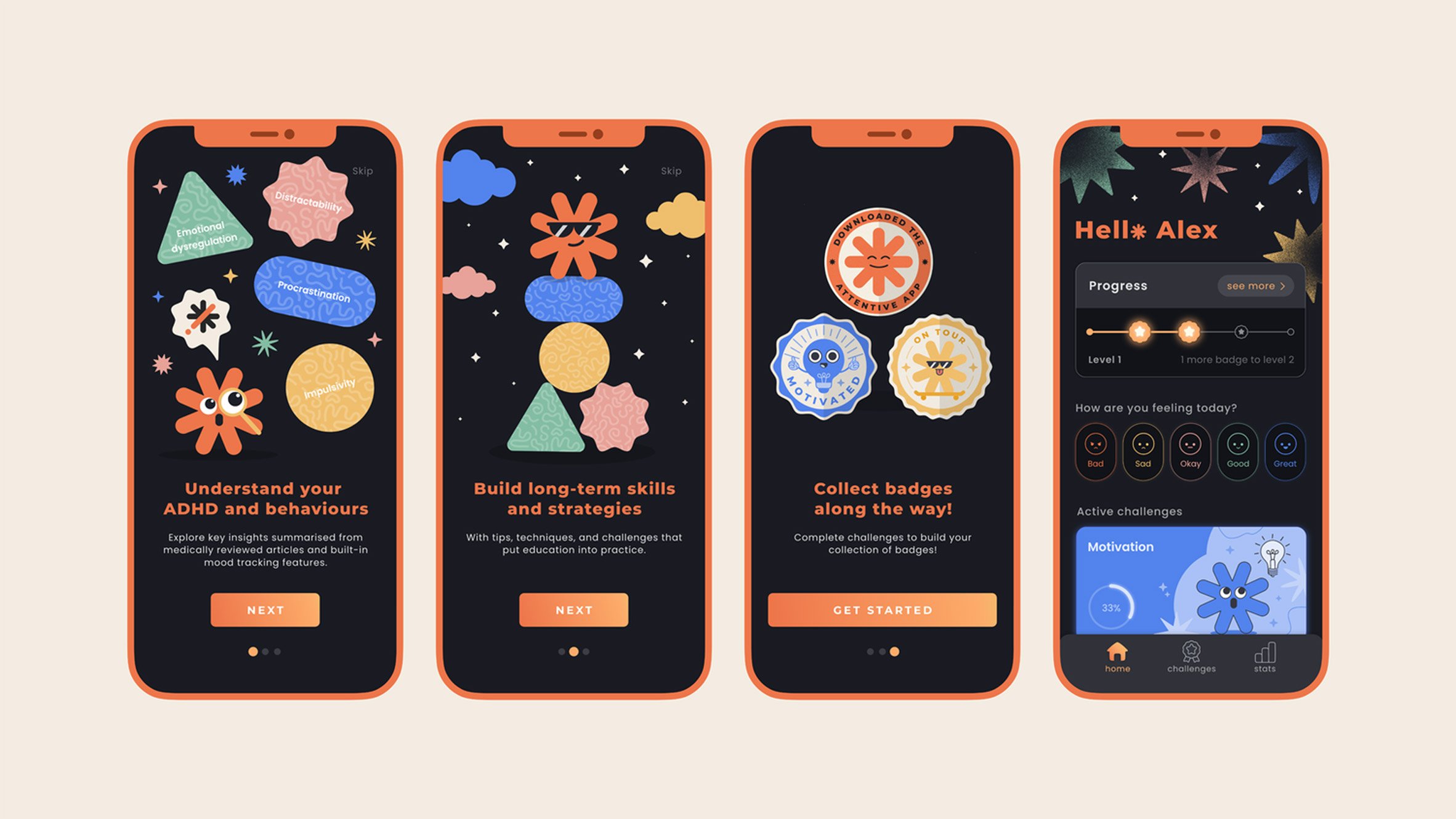
Attent*ve by Kyla Little
“Kyla Little’s project focuses on creating a meaningful connection between users and the management of ADHD. Kyla is dedicated to developing innovative solutions that address individual needs.
“The design brief tasked Kyla with creating a mobile application tailored to one user, aimed at solving a daily problem through exploratory ethnographic research.
“The resulting app, Attentive, offers a gamified interface that promotes engagement and education – each challenge targets specific ADHD-related issues, presenting short learning modules with key insights from medically reviewed articles in an interactive manner.
“Challenges are supported by practical strategies and mood tracking features, helping users identify unique trends, and upon completion users are rewarded with in-app badges.
“Key design choices were informed by UX/UI accessibility guidelines for ADHD users, with features like dark mode, legible typography and a strategic colour palette, all tested with an interactive prototype until validated by the user.”
Student: Kyla Little
Institution: Kyla Little
Course: Bachelor of Design (Graphic and Communication Design), Bachelor of Business (Marketing)
Awards: Australian Graduate of the Year, Interact Category Winner — Higher Education
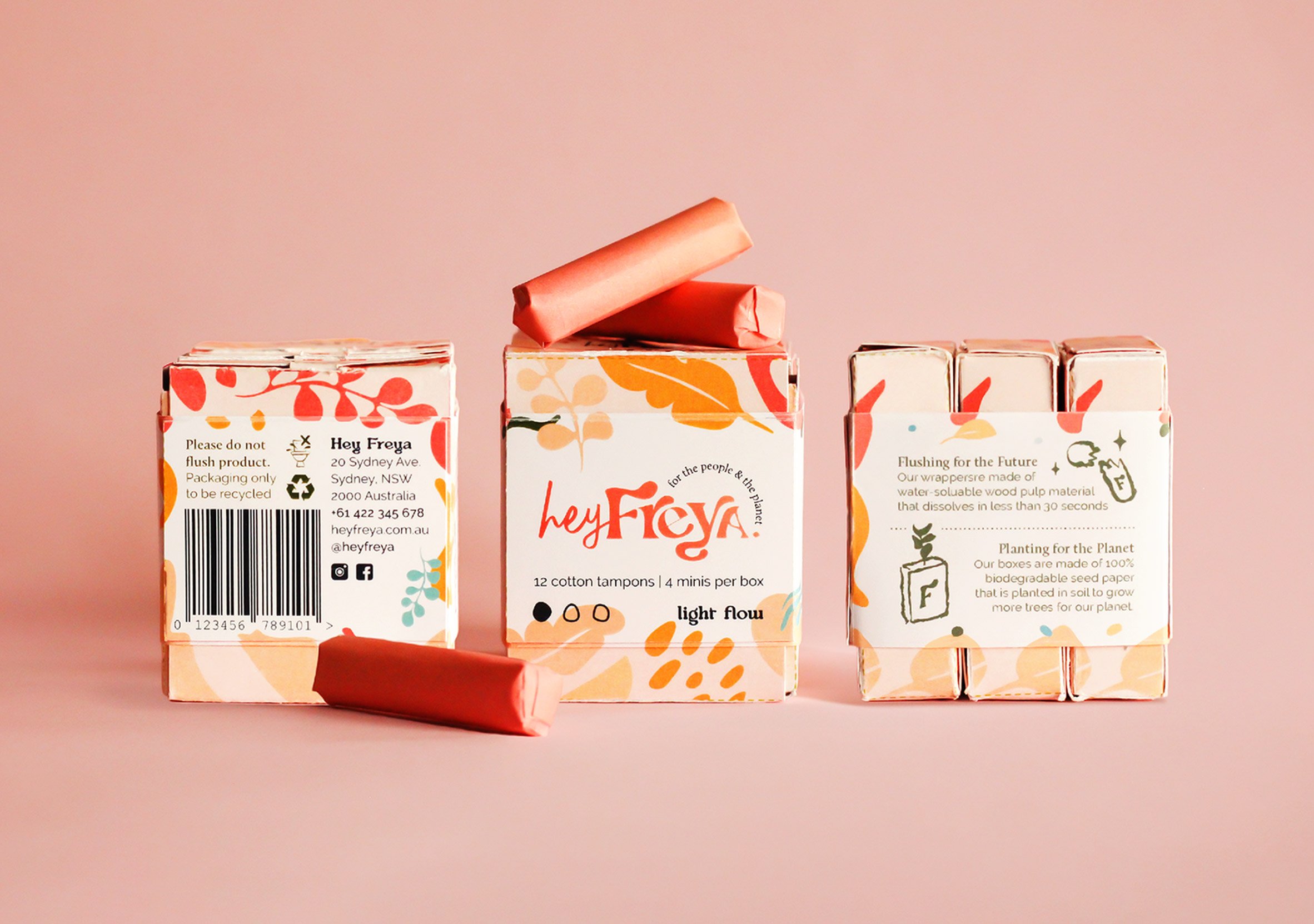
Hey Freya by Holly Theissen
“Holly Theissen’s project centres on creating an innovative and sustainable packaging solution for period product, creating a cohesive brand identity and product artwork to support a 100 per cent biodegradable packaging solution.
The resulting packaging for Hey Freya is a circular solution that prioritises both personal wellbeing and planetary health, with each aspect of the packaging designed to educate and empower consumers to illustrate how eco-conscious choices can positively impact the environment.
“Crafted entirely from biodegradable materials, the visually engaging packaging features a plantable tampon box made from seed paper, encouraging users to grow native plants after use. Additionally, the flushable tampon wrapper disintegrates in water within 30 seconds, minimising waste.
“To enhance user experience, the single-hand functionality of the ergonomic palm-sized box includes a flip-out dispenser for easy access, allowing users to manage their needs seamlessly.
“Jurors noted that Holly’s portfolio showcases impressive skills and knowledge within the design space, reflecting a strong awareness of client and audience needs.”
Student: Holly Theissen
Institution: Billy Blue College of Design at Torrens University (NSW)
Course: Diploma of Graphic Design
Awards: Australian Graduate of the Year, Interact Category Winner — Vocational
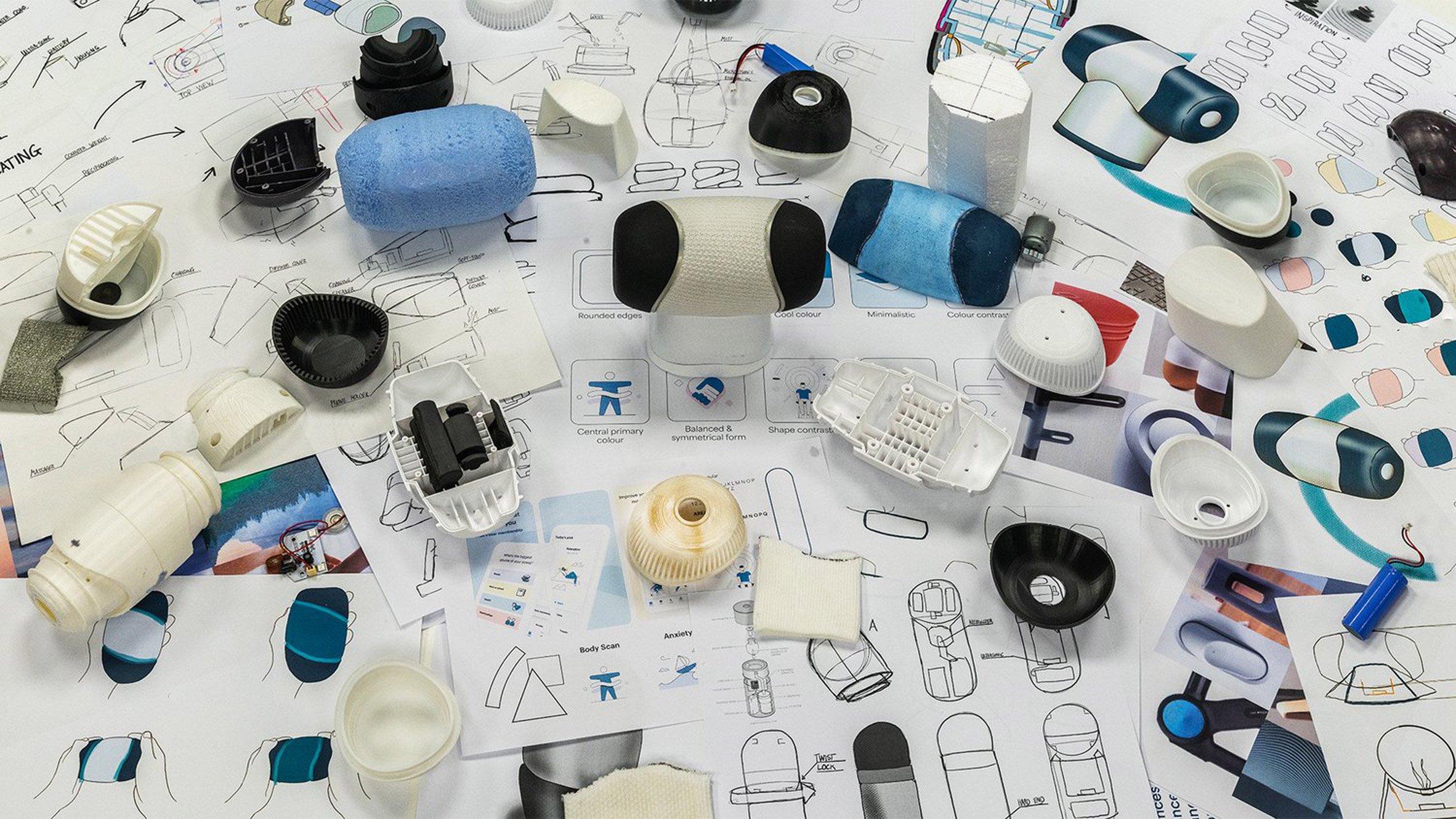
Harmony by Zenith Zaccara
“Zenith Zaccara’s project, Harmony, is a massage device designed to enhance the meditation app ‘balance’, to engage users through multiple senses. Zenith aims to create an immersive experience for those who struggle with meditation, establishing Harmony as an effective stress relief tool.
“In a world filled with distractions, meditation is known for its mental health benefits, yet many – especially those with ADHD or beginners — find it difficult to relax and engage with traditional practices.
“Harmony addresses this challenge by adding a new dimension to meditation, serving as a focal point that enriches the experience with novel sensations and guidance.
“This innovative product expands access to meditation for a broader audience, allowing the app to transition into the physical realm.
“Harmony aligns seamlessly with their brand values, fostering a deeper connection with their customer base.”
Student: Zenith Zaccara
Institution: University of South Australia
Course: Bachelor of Design – Product Design
Awards: SA/NT Graduate of the Year
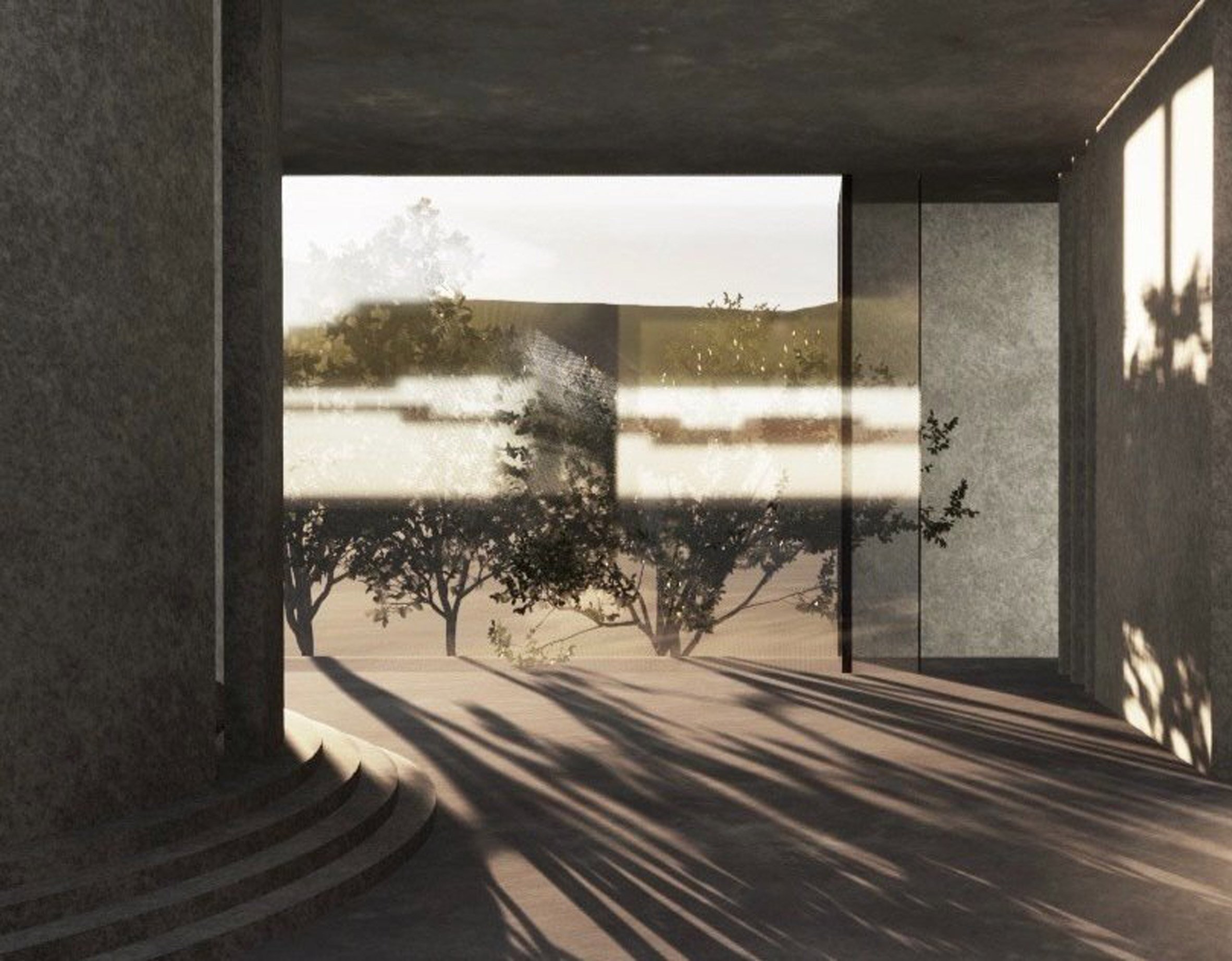
Pariah by Krystal Inosa
“Krystal Inosa’s project, Pariah, proposes a site in Kamikuishiki, Japan, the former location of Gulliver’s Kingdom, an abandoned theme park at the base of Mount Fuji.
“This village is notorious as the headquarters of the Aum Shinrikyo cult, responsible for the 1995 Sarin gas attack in Tokyo, and is situated near Aokigahara, Japan’s infamous suicide forest. Following the theme park’s demolition in the early 2000s, Kamikuishiki was effectively erased from geographical maps.
“The concept for Pariah explores themes of alienation and desolation, manifesting ideas of individualism and liminal spaces. This project symbolises the impacts of alienation, paralleling the phenomenological effects of desolation.
“It serves as a tool for embracing individualism and self-expression, embodied in a transitional space that allows individuals to cross the threshold into their authentic realities.
“Pariah is a sanctuary for those seeking liberation in a world that often opposes sincerity – a sacred meeting point for the rejected.”
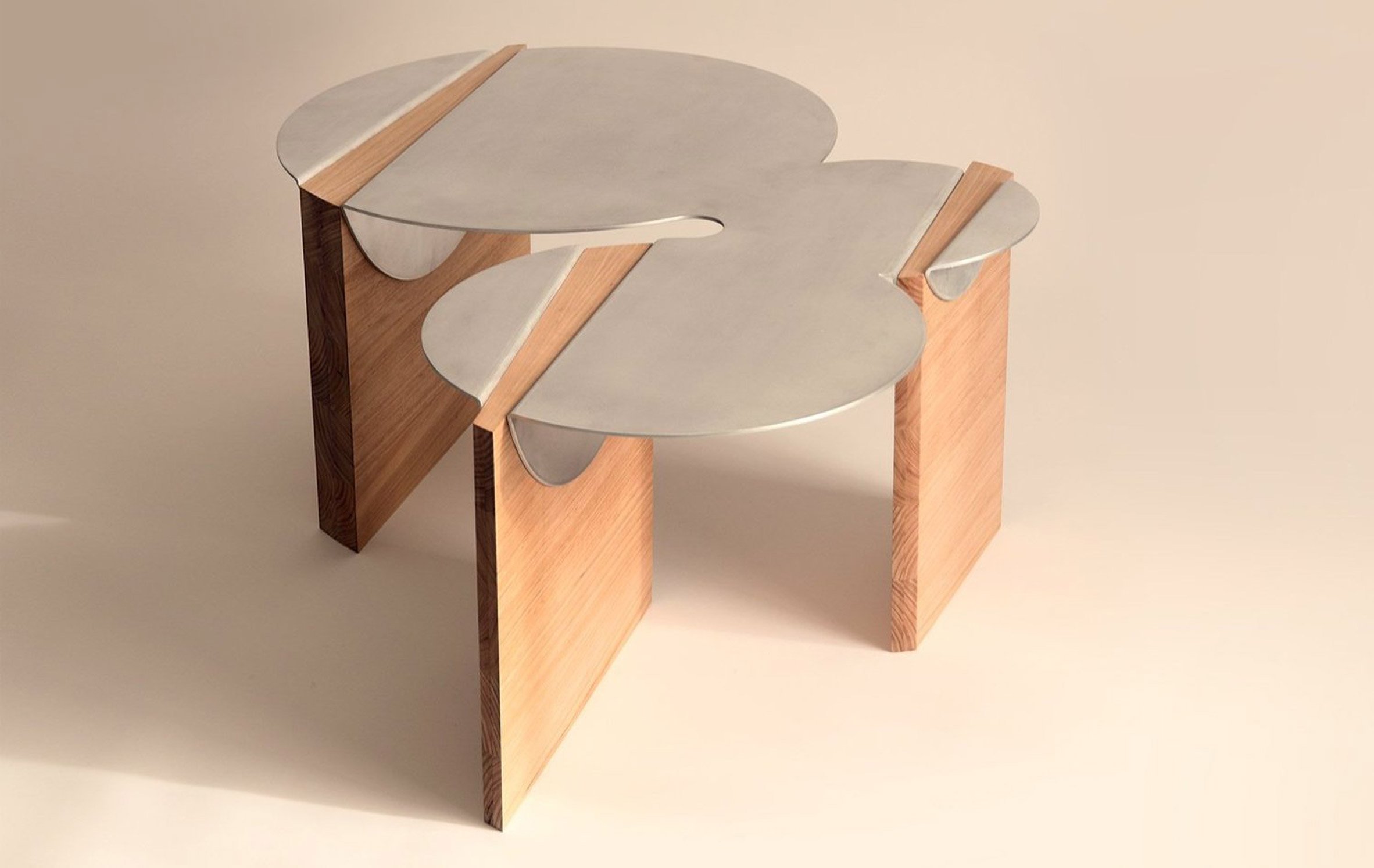
Pleuro by Kaspian Kan
Kaspian Kan’s project embraces the beauty in the unfinished, exploring the honesty of revealing what remains undone and the courage to embrace imperfection.
“The brief asked Kaspian to take inspiration from nature, specifically the clumping, curved forms of mushrooms. The delicate caps seen above ground hint at the vast mycelium networks hidden beneath, much like how chronic illness exists beneath the surface of everyday life.
“The design of the Pleuro table incorporates raw materials that challenge traditional ideas of completion; its unfinished appearance invites reflection on the value of revealing one’s unvarnished self. The table is designed for disassembly, allowing easy separation of materials for recycling and composting at the end of its life cycle.
“By integrating nature’s principles, Kaspian creates a piece that not only tells a resonant story but also highlights the importance of sustainability and authenticity in design.
“The jurors noted the design practice deeply rooted in values of environmental and social equity, with a strong focus on research.”
Student: Kaspian Kan
Institution: RMIT University
Course: Associate Degree in Design (Furniture)
Awards: Australian Graduate of the Year, Use Category Winner — Vocational
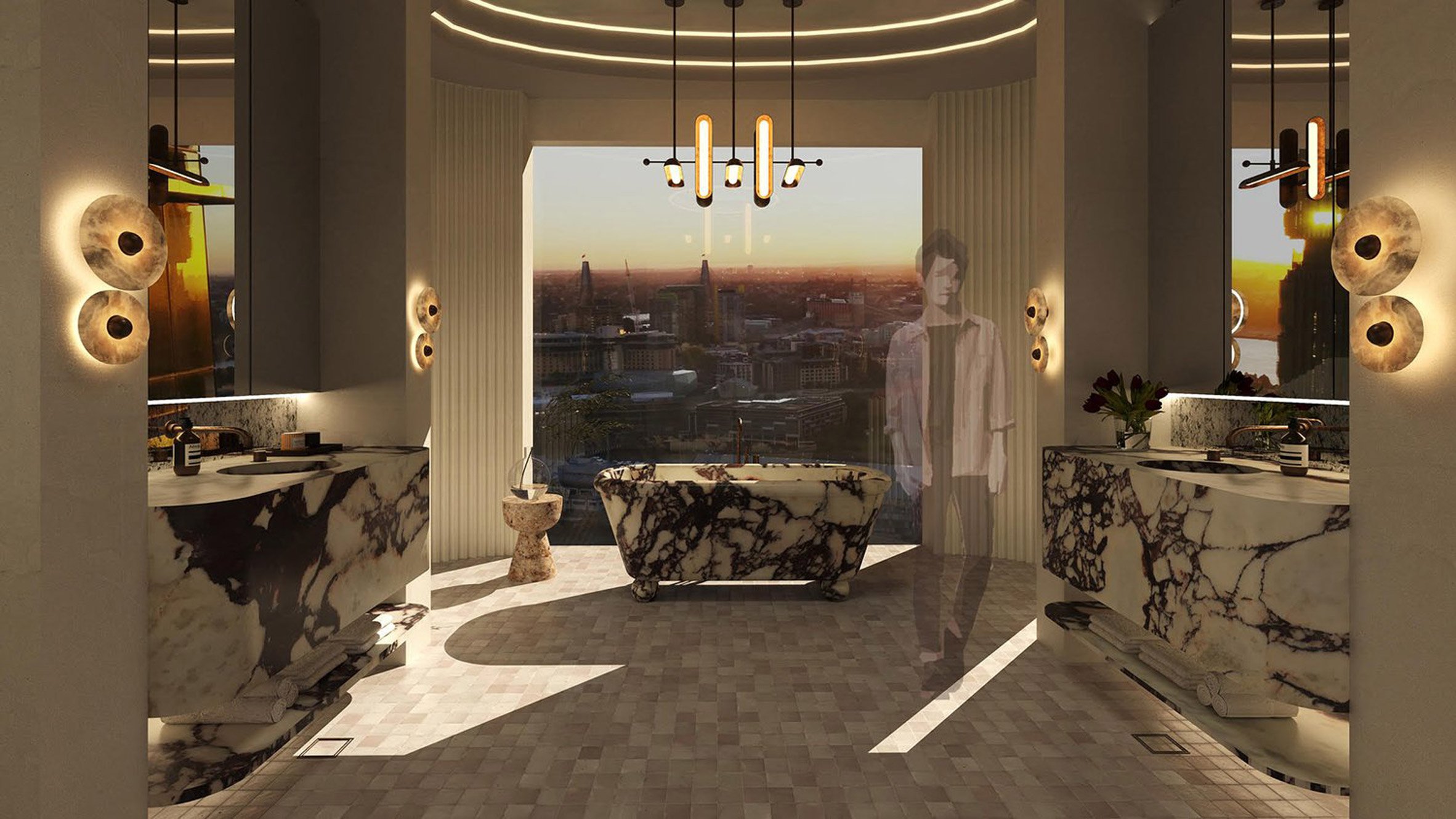
Barangaroo by Jacek Ciok
“Jacek Ciok’s project involves designing an ensuite bathroom and adjoining dressing room for a luxury residential development in Barangaroo, Sydney.
“His concept reinterprets neo-classical forms within a modernist context, drawing on symmetry, scale and balance. Classical motifs, like geometric patterns and floral details, are reimagined with a contemporary twist.
“Jacek’s design began with sketches inspired by the shape of a column capital, with straight edges to frame the freestanding bath, while its volutes lead to the dressing and shower rooms. Luxury is emphasised through symmetry, with two vanities reflecting one another.
“Circular elements, like the dressing room lounge, recall classical archways, while skylights bring in natural light, inspired by ancient oculi. The joinery detailing echoes doric columns and a blend of viola calacatta marble, handmade zellige tiles and aged bronze tapware seamlessly merges classical and modern aesthetics.
“Sustainability is a focus, with the use of natural, non-toxic materials, creating a space that transcends trends – the jurors noted the project;s emphasis on bespoke beauty, highlighting its rich materiality and contemporary curation.”
Student: Jacek Ciok
Institution: Billy Blue College of Design at Torrens University (NSW)
Course: Diploma of Interior Design and Decoration
Awards: Australian Graduate of the Year, Place Category Winner — Vocational
Partnership content
This school show is a partnership between Dezeen and Design Institute of Australia. Find out more about Dezeen partnership content here.

